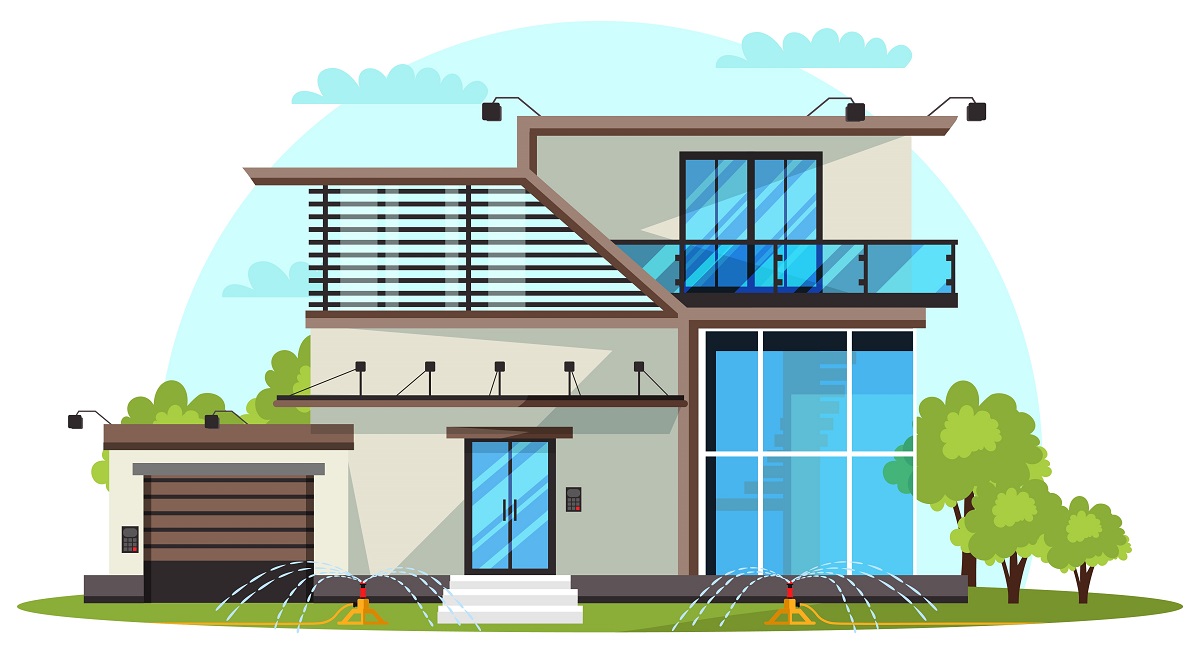How to Buy a Modular Home: Your Comprehensive Guide
Introduction- How to Buy a Modular Home and Land
Purchasing a home is a significant decision, and modular homes have emerged as an appealing option for many buyers due to their cost-effectiveness and customization options. This comprehensive guide aims to walk you through the process of buying a modular home, from understanding what they are to settling into your new dwelling. By the end of this guide, you will be equipped with valuable insights to make an informed decision and navigate the process smoothly.
Understanding Modular Homes
What Are Modular Homes?
Modular homes are prefabricated structures built in a controlled factory environment and then transported to the site for assembly. Unlike traditional on-site construction, modular homes are constructed in modules or sections, ensuring precision and reduced construction time. These modules are designed to fit together seamlessly, resulting in a sturdy and aesthetically pleasing home.
Benefits of Modular Homes
Modular homes offer several advantages over traditional stick-built homes. Firstly, their construction process takes place indoors, which reduces the likelihood of weather-related delays and ensures a more efficient timeline. Additionally, the controlled environment in the factory setting allows for strict quality control, resulting in a high-quality final product. Moreover, modular homes offer greater design flexibility, allowing buyers to choose from a wide array of floor plans and customization options to suit their preferences and lifestyle.
Choosing the Right Modular Home
Assessing Your Needs and Budget
Before embarking on the journey of buying a modular home, it’s essential to assess your needs and budget. Determine the number of bedrooms, bathrooms, and living spaces required for your family. Take into account any future growth or changes in your living situation that might influence your choice of home. Additionally, define a realistic budget to guide your search and avoid overspending.
Researching Available Options
Once you’ve identified your needs and budget, begin researching available modular home options. Explore different manufacturers and builders to find the one that aligns with your vision. Look for companies with a proven track record of delivering quality modular homes and positive customer feedback.
Customization and Floor Plans
One of the significant advantages of modular homes is their customization potential. Many manufacturers offer a wide range of floor plans and design options to suit various tastes and preferences. From choosing the layout of rooms to selecting exterior finishes and interior amenities, you can personalize your modular home to create the living space of your dreams.
Finding the Perfect Location
Selecting a Suitable Plot
After finalizing the design of your modular home, the next step is finding the perfect location to place it. Consider factors such as proximity to your workplace, schools, and essential amenities like grocery stores and hospitals. Evaluate the neighborhood for safety, accessibility, and overall appeal.
Local Zoning and Regulations
Before purchasing land, it’s crucial to understand local zoning regulations and building codes. Each region may have specific restrictions regarding modular homes, including setbacks, height limitations, and design guidelines. Ensure that the plot you choose is zoned appropriately for the placement of a modular home.
Selecting a Reputable Manufacturer
Researching Manufacturers
The success of your modular home project depends on selecting a reputable and reliable manufacturer. Research various manufacturers, their experience, and the types of homes they offer. Look for manufacturers with a proven track record and a portfolio of successful projects.
Reading Reviews and Testimonials
Reading customer reviews and testimonials can provide valuable insights into the satisfaction levels of previous buyers. Look for patterns of positive feedback, exceptional customer service, and timely deliveries.
Checking Credentials and Certifications
Verify the credentials and certifications of the manufacturer to ensure they meet industry standards for construction and safety. Accredited manufacturers adhere to quality guidelines, ensuring a well-built and safe modular home for you and your family.
The Buying Process
Requesting Quotes and Estimates
Once you have chosen a manufacturer, request quotes and estimates for the modular home you have in mind. Be specific about the features and customization options you desire to receive accurate pricing information.
Negotiating the Price
Negotiate with the manufacturer to get the best deal within your budget. Discuss any potential discounts or promotions and explore financing options to ease the financial burden.
Signing the Contract
Before moving forward, carefully review the contract provided by the manufacturer. Ensure that all details, including the floor plan, materials, and delivery schedule, are accurately reflected in the agreement. Seek legal counsel if needed to ensure a fair and transparent contract.
Financing Your Modular Home
Exploring Financing Options
With the contract in place, it’s time to explore financing options for your modular home. Research various lenders and banks to find the best interest rates and loan terms that align with your financial situation.
Securing a Mortgage or Loan
Apply for a mortgage or loan to secure the funds required for your modular home purchase. Provide all necessary documentation and cooperate with the lender throughout the approval process.
Understanding Insurance Requirements
Before finalizing the financing, understand the insurance requirements for your modular home. Consult with insurance providers to determine the coverage options available for your specific needs.
Preparing the Site
Site Inspection and Preparation
Inspect the chosen plot of land thoroughly to ensure it is suitable for the placement of a modular home. Check for potential issues such as drainage problems, soil stability, and access to utilities.
Foundation and Utilities
Prepare the site by laying the foundation for your modular home and ensuring all necessary utilities are available and connected. A strong foundation is essential for the stability and longevity of your home.
Customizing Your Modular Home
Interior and Exterior Finishes
Take advantage of the customization options offered by the manufacturer to select interior and exterior finishes that reflect your style and preferences. From paint colors to flooring materials, make choices that will make your modular home truly yours.
Upgrades and Add-Ons
Consider any additional upgrades or add-ons you’d like to include in your modular home. Whether it’s a deck, porch, or energy-efficient appliances, these features can enhance your living experience.
Transportation and Assembly
Logistics of Delivery
Coordinate the transportation of the modular home modules to the site. Work closely with the manufacturer to ensure a smooth delivery process, considering any potential road restrictions or permits required.
Setting Up the Modular Home
Once the modules have arrived on-site, the assembly process begins. Experienced professionals will skillfully connect and secure the modules to create a cohesive and sturdy structure.
Final Inspections and Quality Checks
Ensuring Compliance and Safety
Before moving in, conduct final inspections to ensure that your modular home complies with local building codes and safety standards. Address any issues promptly to ensure a safe and secure living environment.
Thorough Quality Inspections
Perform comprehensive quality checks to ensure that the modular home meets the specified standards of the manufacturer. Verify that all finishes, fixtures, and systems are in excellent condition.
Moving In and Settling
Decorating and Furnishing
With your modular home ready, it’s time to move in and make it feel like home. Decorate and furnish the space to create a comfortable and welcoming environment for you and your family.
Connecting Utilities
Coordinate with utility providers to ensure that water, electricity, and other essential services are connected and functioning correctly.
Completing the Move-In Process
Complete the move-in process by unpacking your belongings and settling into your new modular home. Take the time to familiarize yourself with the layout and features of your new space.
Maintaining Your Modular Home
Regular Cleaning and Upkeep
To ensure your modular home remains in top condition, establish a regular cleaning and upkeep routine. Regular maintenance will help preserve the beauty and functionality of your home.
Addressing Repairs and Maintenance
Address any repairs or maintenance issues promptly to prevent small problems from becoming significant concerns. Working with reputable contractors and service providers will ensure that your modular home remains in excellent shape for years to come.
Conclusion
In conclusion, buying a modular home can be an exciting and rewarding experience when approached with careful consideration and research. From understanding the benefits of modular homes to customizing your space and completing the move-in process, each step is essential to ensure a successful purchase. By following this comprehensive guide, you can confidently navigate the journey of buying a modular home and enjoy the many advantages it offers.
FAQs
Is a modular home the same as a mobile home?
No, modular homes and mobile homes are not the same. Modular homes are built in sections in a factory and assembled on-site, whereas mobile homes are built on a permanent chassis and designed for transportation.
Can I customize the layout of my modular home?
Yes, one of the significant advantages of modular homes is the ability to customize the layout. Many manufacturers offer a range of floor plans and customization options to suit your preferences.
How long does it take to build a modular home?
The construction time for a modular home varies depending on factors such as the complexity of the design and the availability of materials. However, modular homes are generally completed faster than traditional stick-built homes.
Can I add more rooms to my modular home in the future?
Yes, modular homes are designed with flexibility in mind, allowing for future expansions and additions. Consult with the manufacturer or a contractor to explore the possibilities for adding more rooms.
Are modular homes energy-efficient?
Yes, modular homes are known for their energy efficiency. The controlled construction process in a factory setting allows for better insulation and the use of energy-efficient materials, resulting in lower energy consumption and utility costs.



